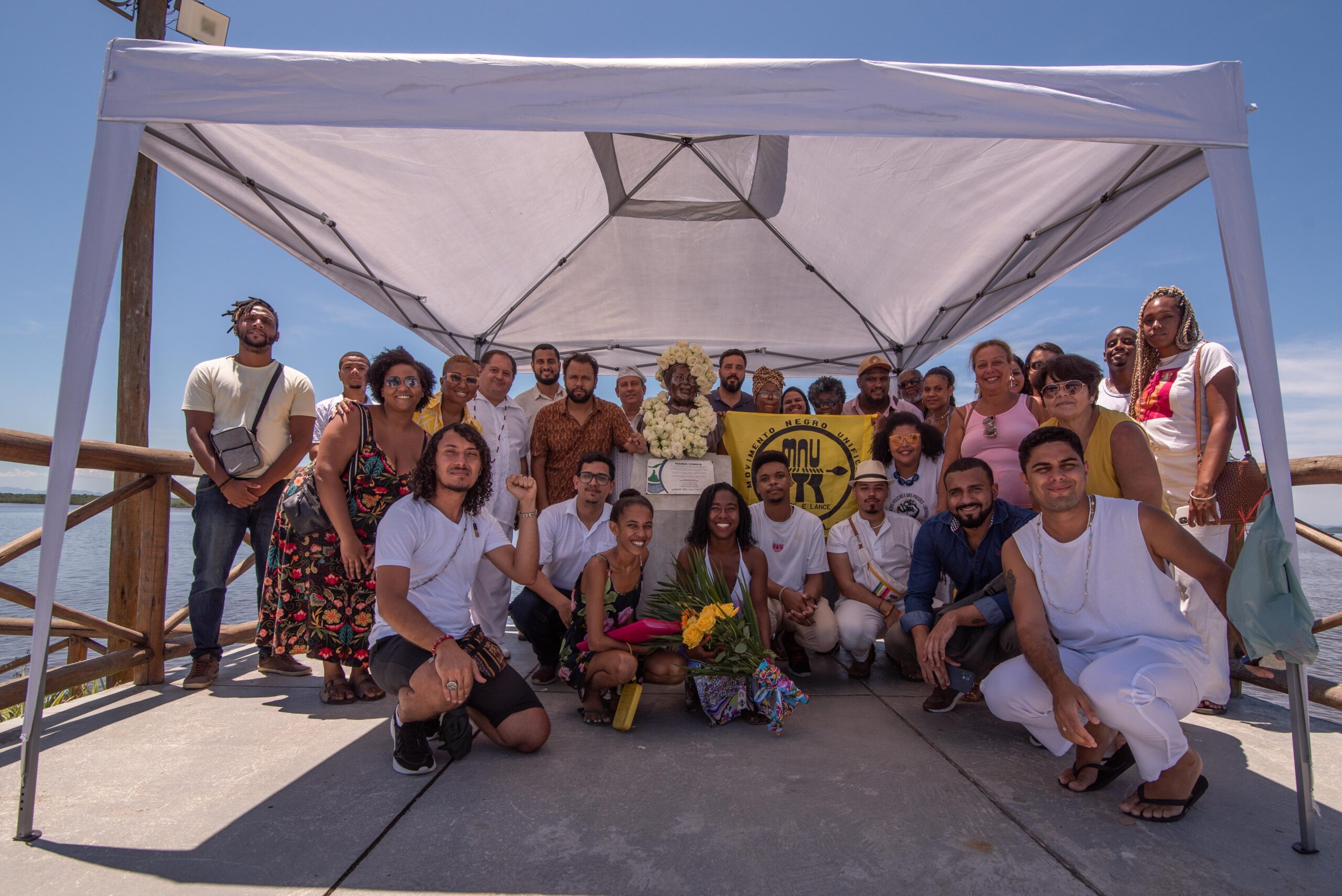
Maria Conga was a quilombola leader who led the fight against slavery in the city of Magé in Greater Rio de Janeiro’s Baixada Fluminense region in the early 19th century. She is an example, a heroine of resistance against slavery who must be remembered and whose story must be preserved and defended. For this reason a bust was inaugurated in her honor in November 2021 on the Piedade Pier—a tourist spot in Magé. However, just over a year later, on February 5, 2023, the monument was defaced with a Nazi swastika. The perpetrator is yet to be identified.
The Nazi and racist crime inflicted on the bust of Maria Conga led to an organized protest in front of her monument, defending the memory of the Congolese-Brazilian leader, where around 50 people gathered together in a symbolic “Maria Conga Coronation.” This ceremony fulfilled, around 200 years later, something for which Maria Conga was born and had been prepared for by her parents, but which, thanks to being kidnapped and trafficked to Brazil, never happened: being crowned. An African Princess, the daughter of a Congolese King in the 18th century, Maria Conga was finally crowned and is no longer a princess: she is a queen.
Besides the coronation, the rally was also aimed at demanding government ensure the restoration and protection of the monument, investigate those responsible for the crime, prevent future damage, and stop neglecting and disregarding the quilombola communities of Magé. The city has three quilombos [traditional ancestral communities established by descendants of enslaved Africans] formally recognized by the Palmares Foundation. In addition to the Maria Conga Quilombo itself, there are the Feital and Quilombá quilombos.
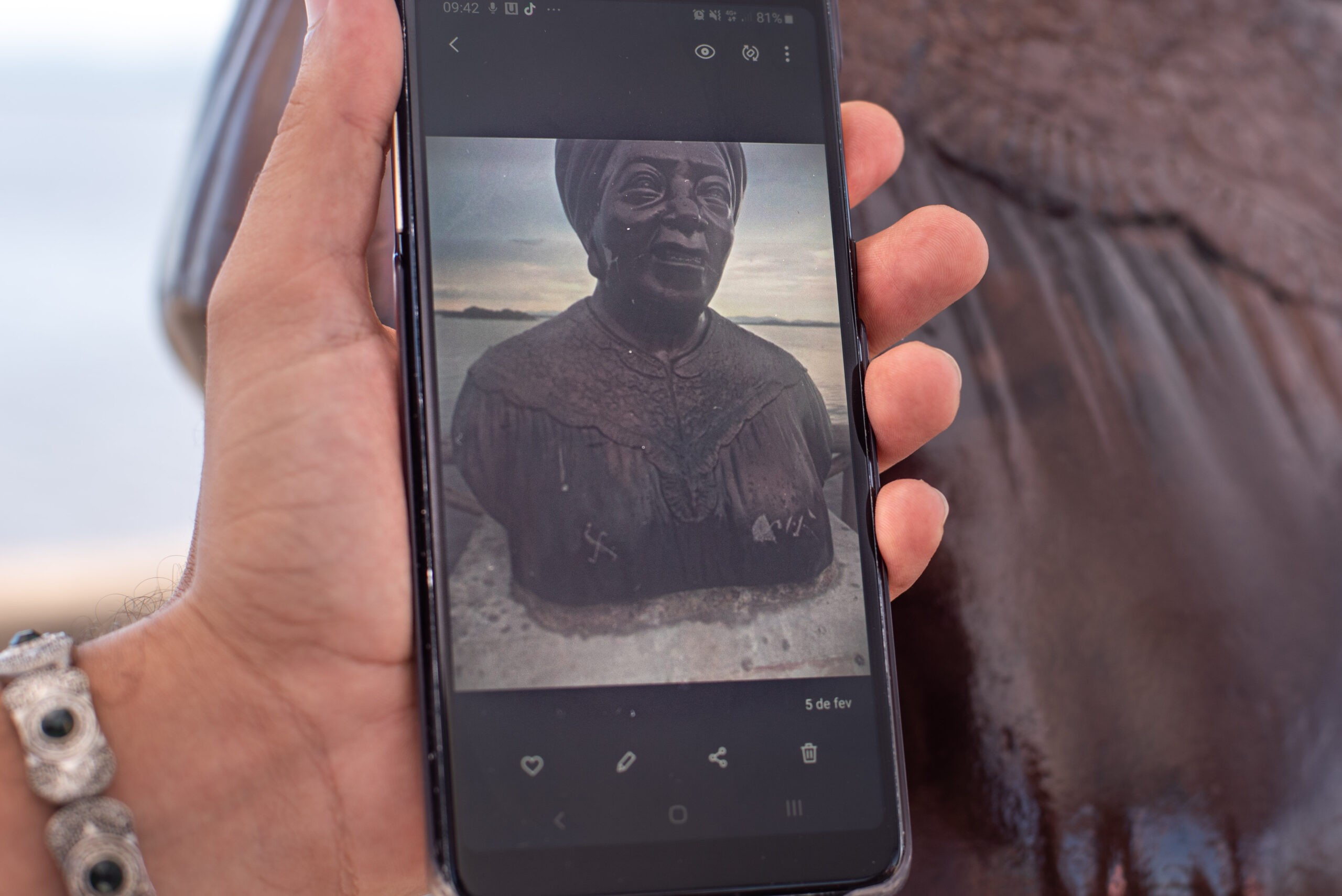
The ceremony was attended by the Maria Conga Quilombo, Feital Quilombo, Rio de Janeiro Quilombola Communities Association (ACQUILERJ), Warrior Saint George Spiritist Center, Guarani Collective, Magé Climate Forum, Unified Black Movement (MNU), Right to Memory and Racial Justice Initiative (IDMRJ), Magé Popular Struggle Committee, Rio de Janeiro State Front for Decarceration, Racial Equality and Human Rights Commissions of the Brazilian Bar Association (OAB – Magé-Guapimirim Chapter), Network of Communities and Movements Against Violence, as well as representatives of the Magé City Hall, the mãedata (as they call the mandate) of Rio de Janeiro Councilor Thais Ferreira, and Federal Deputy Henrique Vieira. The protest was also attended by local residents and supporters of the historic and religious figure of Maria Conga.
The Life Story of the Congolese-Magé Quilombola Leader
Maria Conga’s life was marked by the struggle that culminated in the liberation of enslaved Africans and Afro-Brazilians in Brazil. Through coordinated group escapes, facilitated by a tunnel she built connecting slave regions to the area where her quilombo was located, she helped the enslaved people of Magé conquer freedom. Her approach was similar to that associated with Harriet Tubman in the United States.
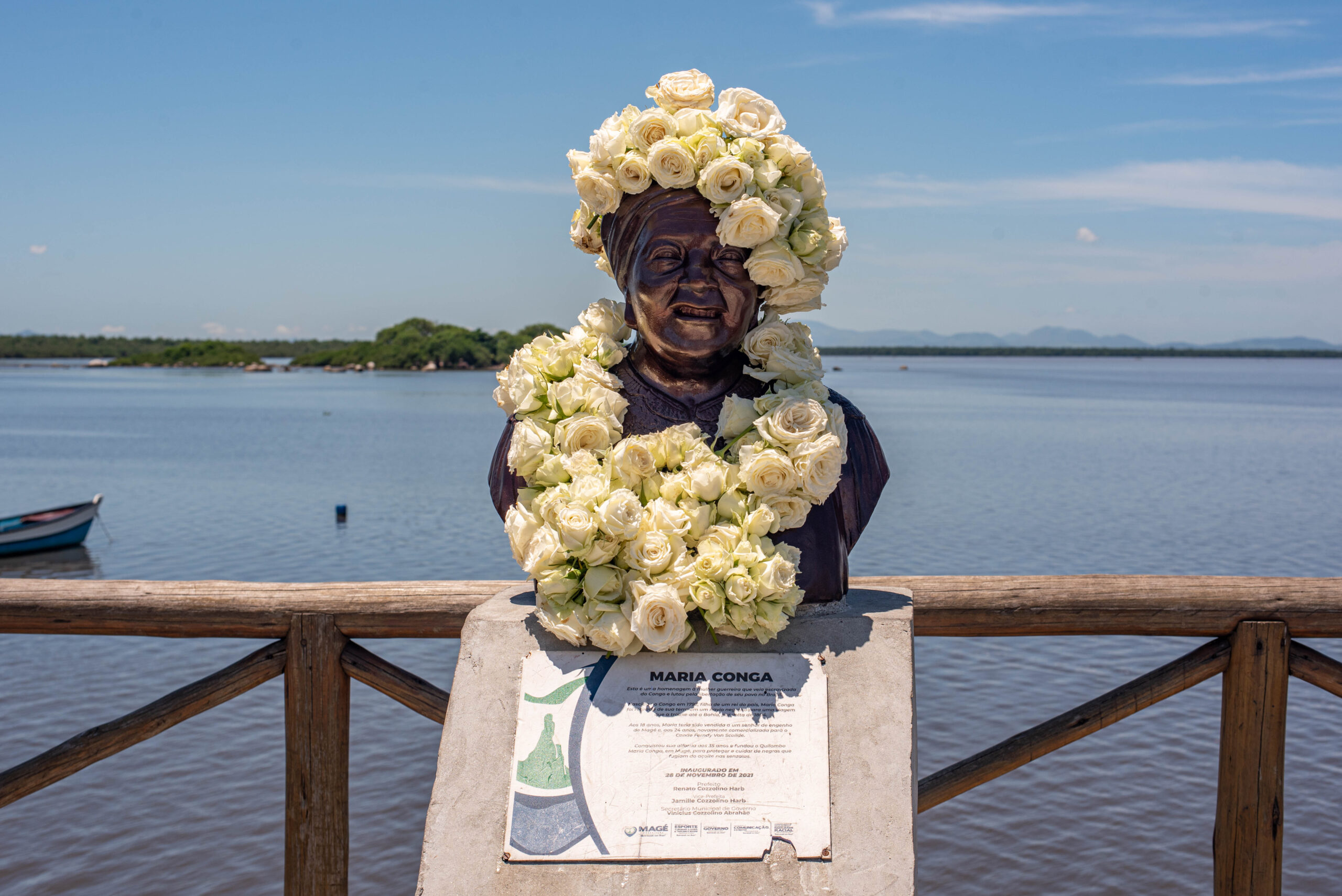
Born the daughter of a Congolese king in 1792, Maria Conga was brought to the Brazilian state of Bahia around 1804. At 18, she was sold to a slaveowner from Magé. After years of struggle, she was granted her freedom at age 35, at which point she founded the quilombo. The figure of Maria Conga is fundamental to the city of Magé’s history. One of the organizers of the ceremony, Marcos Cesar Junior, teacher and resident of the Maria Conga Quilombo, spoke about the historical importance of the Congolese-Brazilian heroine:
“She was the founder of the Maria Conga Quilombo, located in the first district in the area surrounding Morro Maria Conga. She is attributed with organizing the escapes of enslaved people that were illegally landed following the Feijó Law [the first law to prevent the importation of enslaved people] at Piedade Beach [in Magé], where the Auction Square used to be. The Feital Quilombo is also in the neighborhood of Piedade, another reference point in the fight against slavery. The elders tell us that Maria Conga was responsible for building a tunnel that connected Piedade to Morro do Bonfim, through which people escaped.”
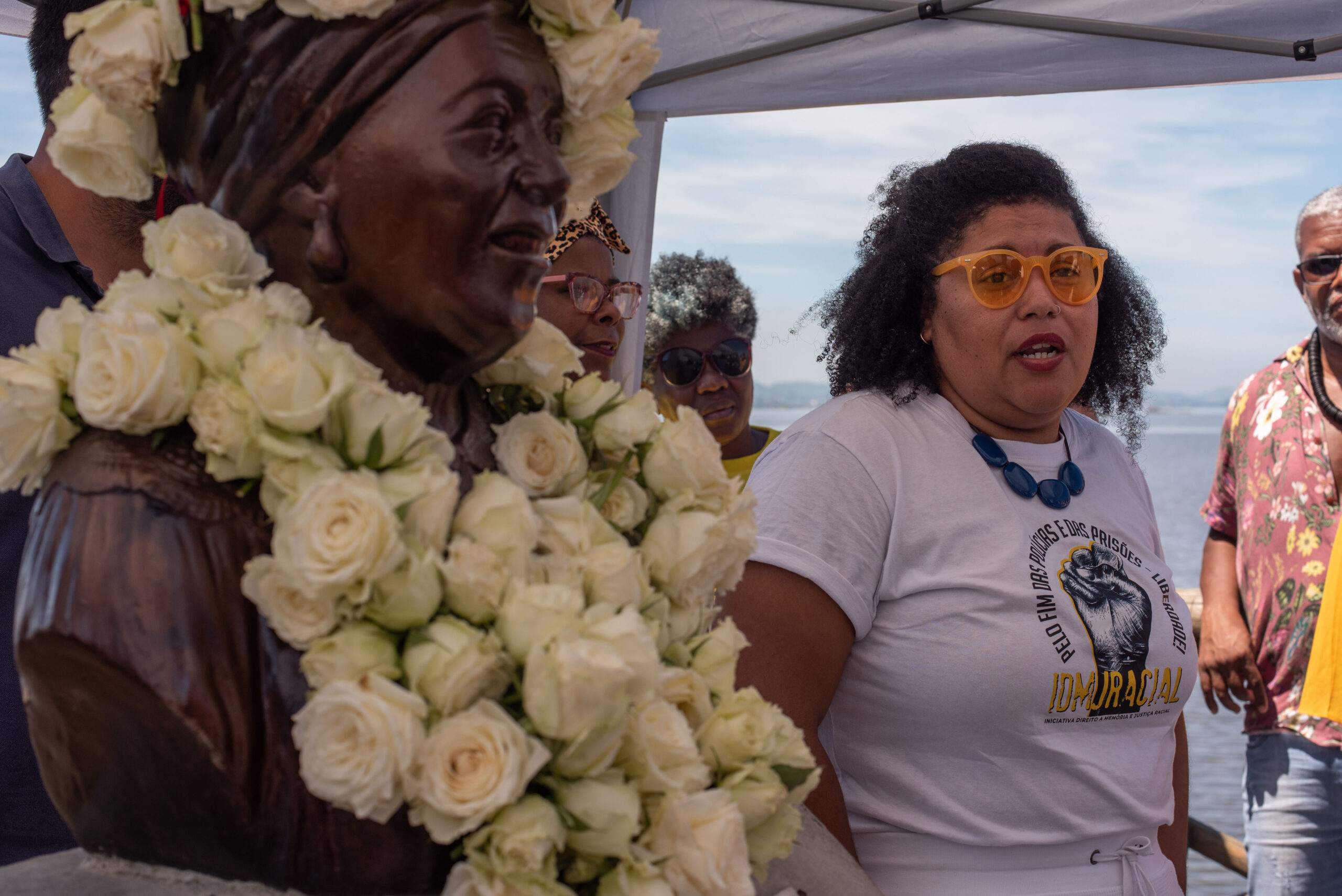
Giselle Florentino from the Right to Memory and Racial Justice Initiative (IDMRJ) spoke at the event about the need to form a new perspective in the debate so that it is not just about the forming of quilombos, but about how they were critical to the forming the Baixada Fluminense region itself:
“It’s been argued that the Baixada Fluminense emerged from the region’s agricultural development and we want to retell another story from the point of view of Black people, indigenous people, and immigrants. [The story] that the Baixada Fluminense was founded from a complex of quilombos run by Black women called ‘Hidra de Iguaçu.’ The Maria Conga Quilombo resisted attempts by the Portuguese Royal Guard for 100 years and was considered one of the most resistant and militant in the days of the Crown. It is from this social configuration that the Baixada Fluminense was formed.”
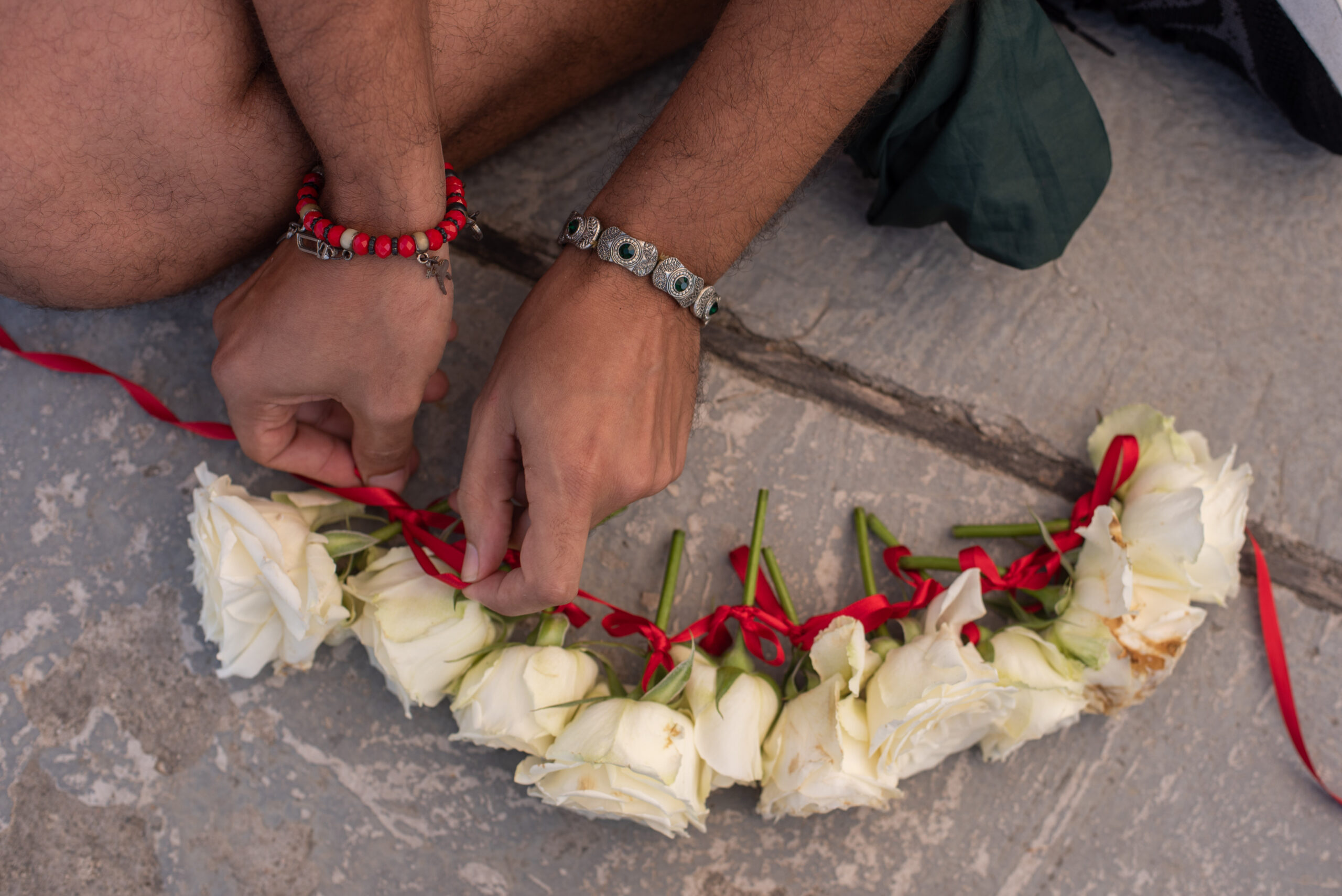
Maria Conga not only housed enslaved people who managed to escape violence, she also looked after the sick, delivered babies, and resolved problems within the community. She fought for those who became her children from when they arrived at the quilombo until the end of her life. She was never captured and died from natural causes at age 90.
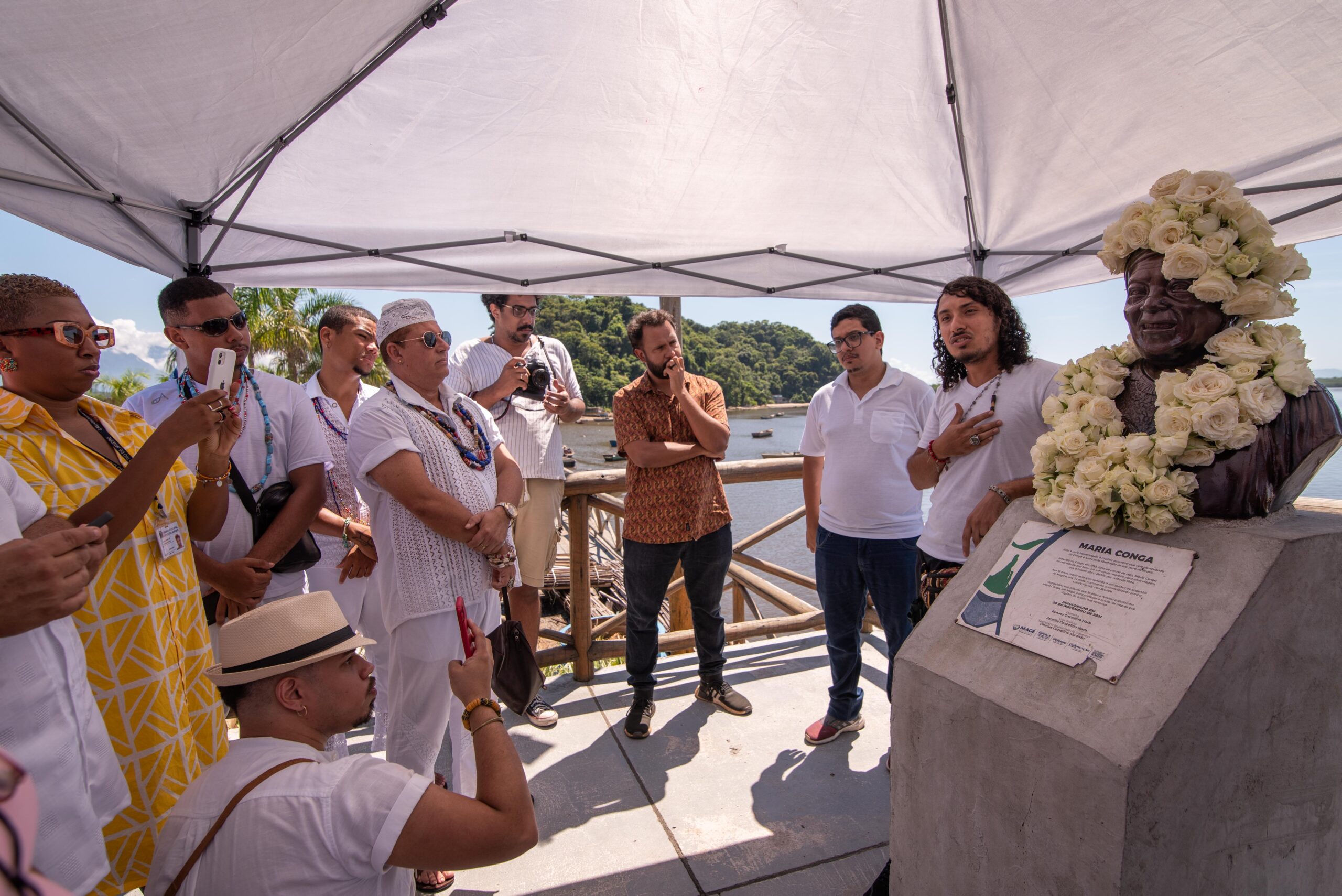
She then began her journey as an ancestor, becoming known as Grandma Maria Conga, a spiritual entity worshipped in the Afro-Brazilian religion of Umbanda. For Umbanda followers, Maria Conga has a spiritual and ancestral significance which goes beyond her historical importance as a quilombola leader. The Nazi and racist attack goes beyond her as a historical figure, it also resonates as a case of religious racism.
The Act of Defiance Against Nazi and Racist Violence Toward the Bust of Maria Conga
The invitation to the “Maria Conga Coronation” event asked participants to bring white flowers. They were used to make a crown, which was wrapped around the head of the bust of Maria Conga, a type of offering to the quilombola heroine, mother and grandmother to many, liberator of legions of enslaved Black people, and spiritual entity for generations of Umbanda followers.
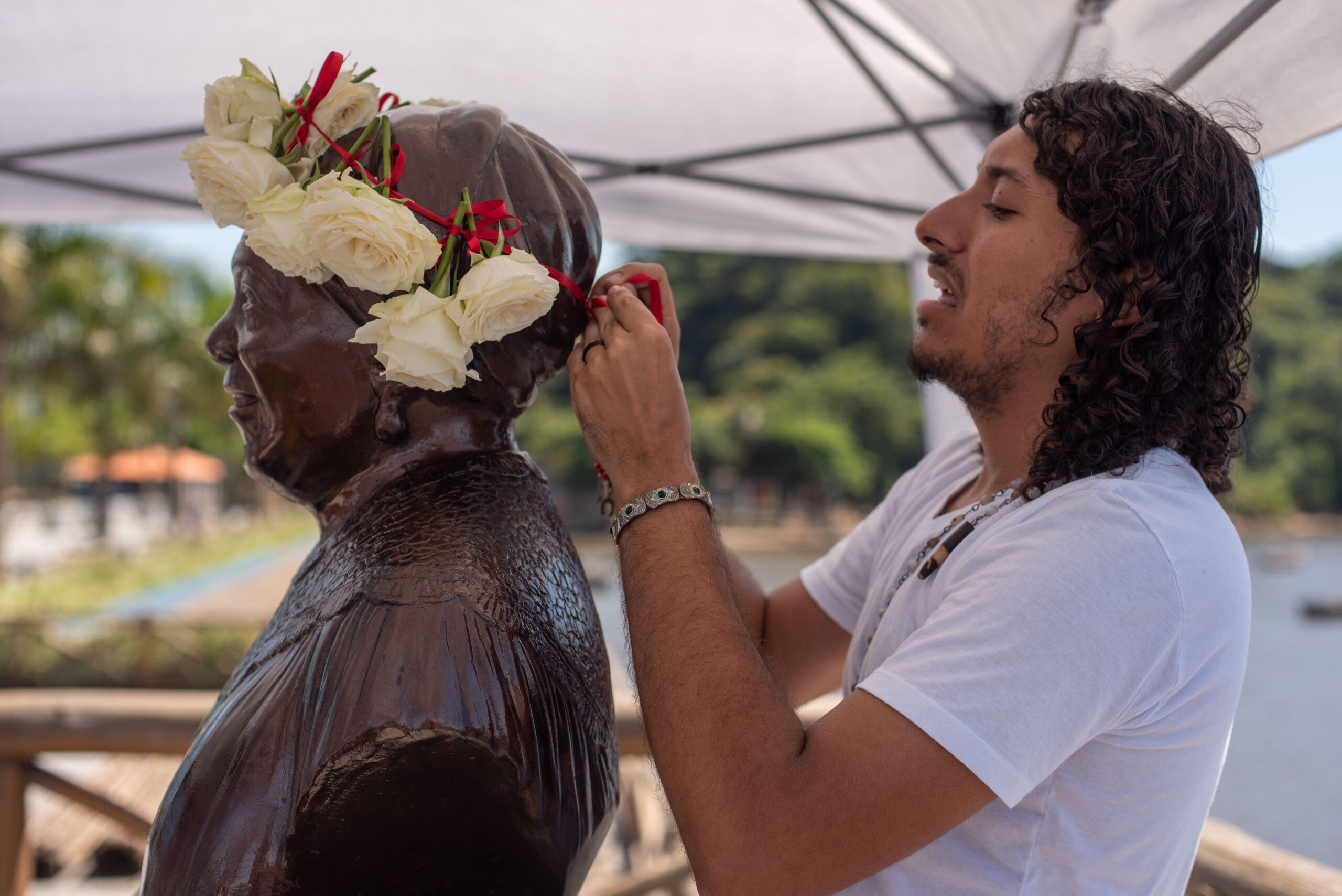
After this intervention, people arranged themselves to hold talks. All attendees showed outrage over the violence toward memory represented by the attack on Maria Conga’s bust and reinforced the need for the crime to be investigated and for those responsible to be punished. Anderson Ribeiro, lawyer and human rights defender in the Baixada, president of the Human Rights Commission of the Brazilian Bar Association, Magé and Guapimirim Chapter, and member of the Guarani Collective, listed the crimes and respective penalties that could be imposed on the criminals: “The crimes are incitement to racism, condoning Nazism, and damaging public property. The penalty for the crime of damage to public property is six months to three years detention, and the crimes of incitement to racism and condoning Nazism are two to five years, and the offender may be banned from visiting the place where the vandalism was committed for three years.”
Marcos Cesar explained how “the fascist and racist violence existed from the moment they did what they did… They branded swastikas all over her, on her forehead, on her cheek, on her lip, on both breasts. On the day, we saw it, and it was like this. Even after the restoration, the marks are still visible.”
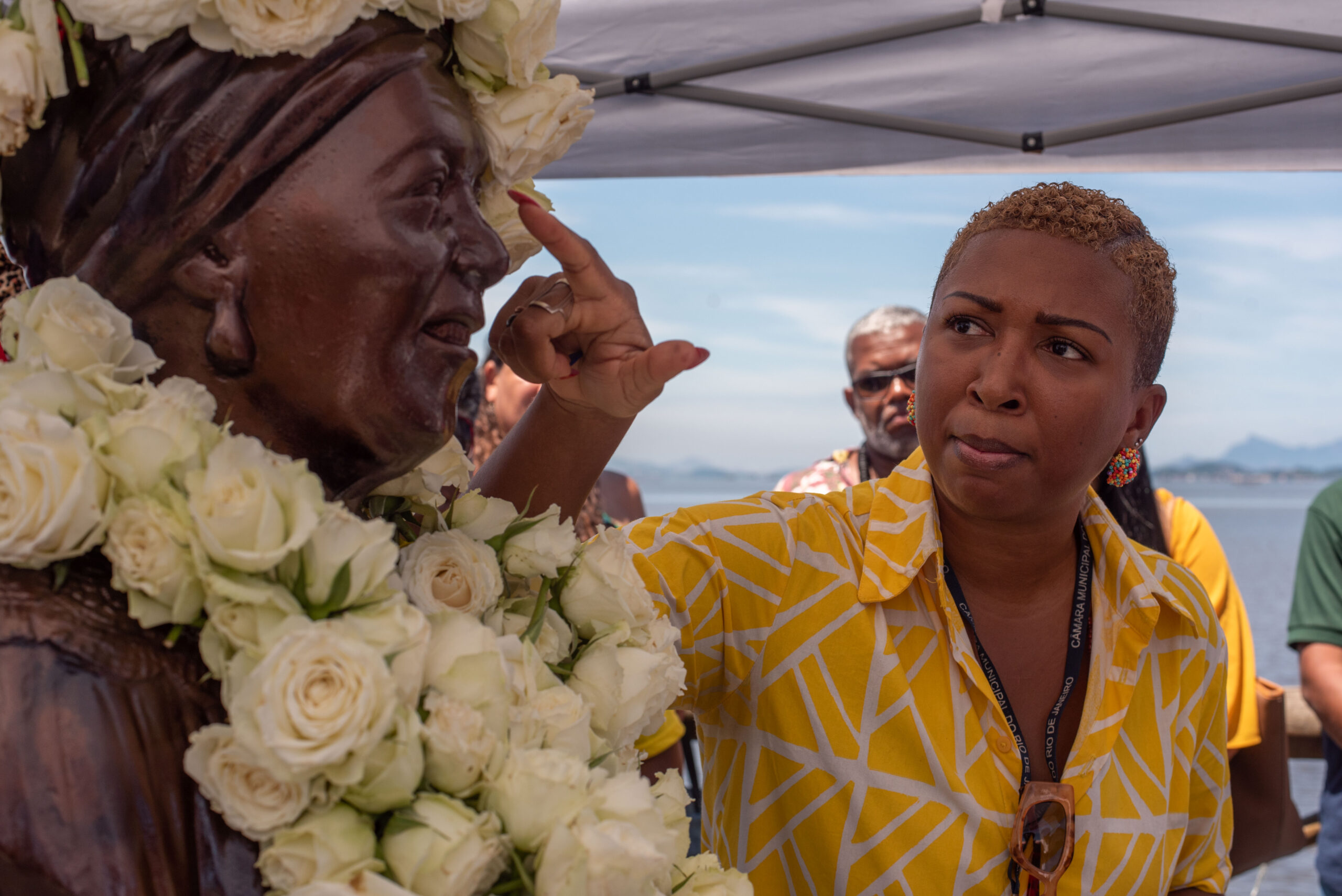
These Nazi marks that remain were highlighted as a cause for concern by many of those present at the event. Despite Magé City Hall’s work to restore the monument, marks from the Nazi abuse are still visible on some areas of the bust. Fabíola Nascimento, advisor to Councilor Thaís Ferreira, emphasized the need for the bust to be fully restored so that it does not become, in her words, a “Memorial to Hatred.” The bust of Maria Conga must carry on contributing to the “production of an affirmative memory of the quilombola people in Brazil and not [be] a memorial to hatred… because as long as the swastika marks are visible on this bust… if public authorities do not intervene, it could become a memorial to hatred.”
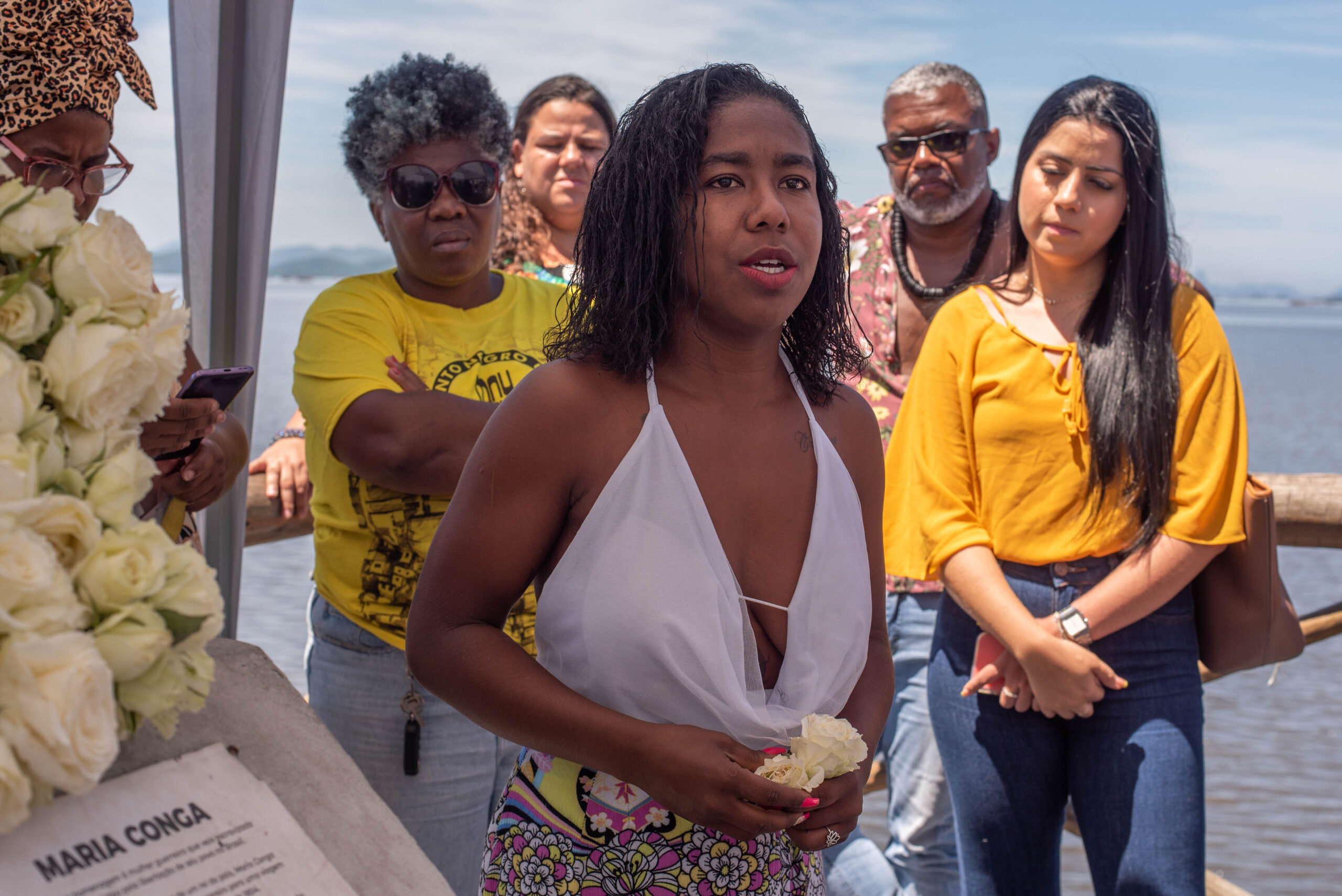
Iasmine Alfradique, president of the Maria Conga Quilombo, spoke about the need to go beyond condemnation. She invited event participants, from representatives of social movements and collectives to public officials, to mobilize in support of the Maria Conga quilombola community:
“For me, it’s very important for us to have events like this, historical events, acts of love. It’s very memorable, I think it is very important for us to have a museum, to build our history. This is why the bust is here… It is very important that we build and go forward. It [the coronation] is very beautiful, but I need us to move away from the monuments that we defend so much! With due respect [to those present], let’s focus on a human being that is still breathing! Because if we can’t save humans, we cannot save anything else.”
Alfradique stressed that the act was one of repudiation, but also focused on drawing the attention of all present to the quilombola cause that is currently being delegitimized, violated, missing broad political and social support. The coronation of Maria Conga in Magé invites us to reflect and act on the importance of preserving the culture, memory, and history of Black people and their resistance techniques.
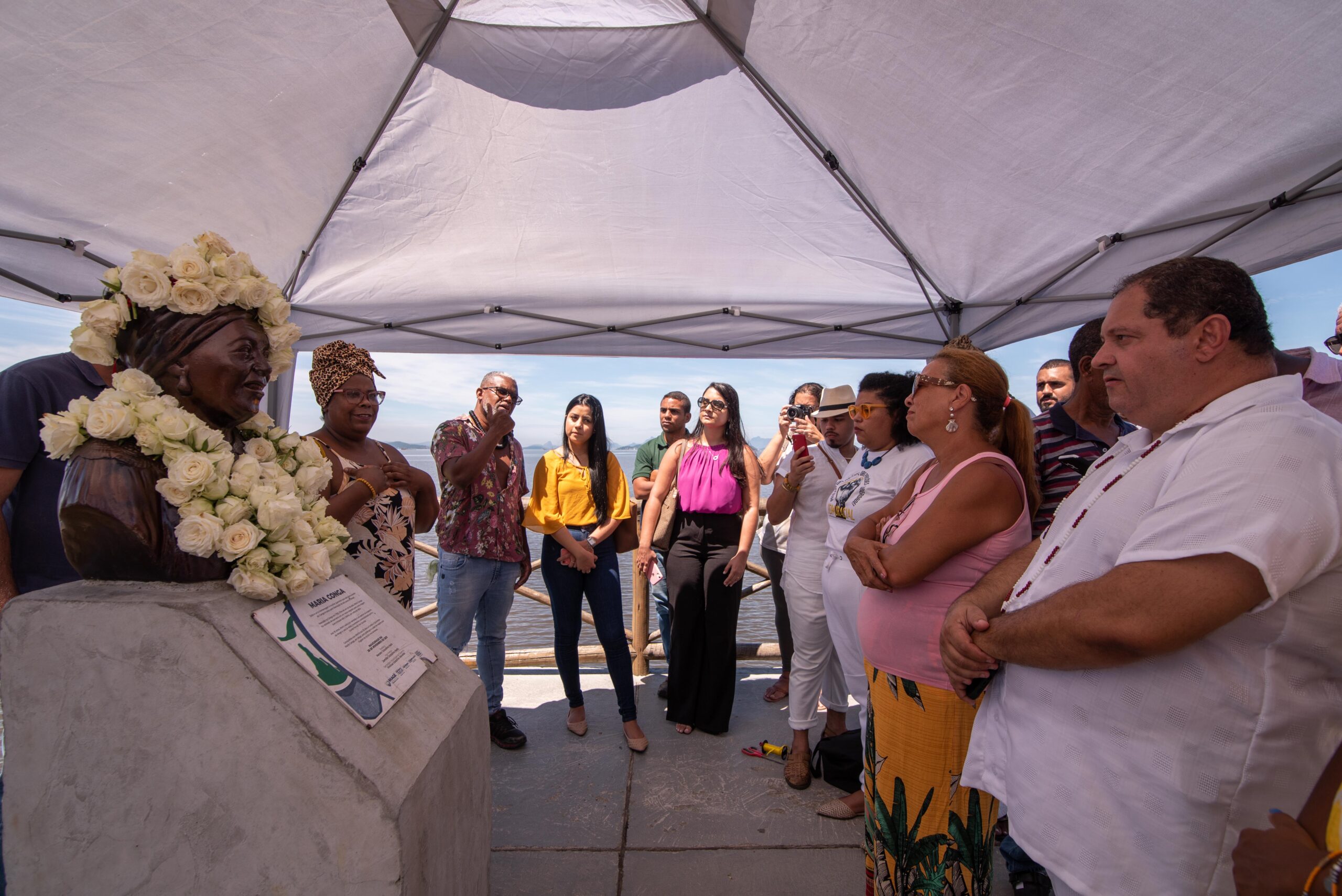
What started in response to an act of violence is evolving toward the building of a movement, fruit of the strength and cohesion of the quilombola people, the Black movement, and the collectives and practitioners of Afro-Brazilian religions. It is essential to highlight the need for urgent action from the public authorities to preserve and value this cultural, historical, and spiritual heritage which the figure of national heroine Maria Conga provides for Magé, the Baixada Fluminense, and Brazil.
About the author: Bárbara Dias was born and raised in Bangu, in Rio’s West Zone. She has a degree in Biological Sciences, a master’s in Environmental Education, and has been a public school teacher since 2006. She is a photojournalist and also works with documentary photography. She is a popular communicator for Núcleo Piratininga de Comunicação (NPC) and co-founder of Coletivo Fotoguerrilha.
